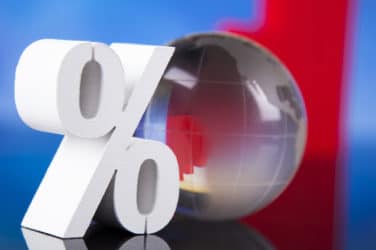
The likelihood that the Federal Reserve will raise interest rates after it ends its latest round of quantitative easing is small given the anemic state of the economy, an economist says.
“We had for a while a more benign outlook for rates, based on the fact that we actually thought tapering would happen later than it did,” said Markus Schomer, chief economist at Pinebridge Investments. “But even under tapering, interest rates would not really come on the radar screen for a while.”
Inflation is by far the most important determinant of future interest rates, according to Schomer.
“The key thing is inflation when it comes to the rates outlook. Nothing else matters,” he said. “The Fed doesn’t matter. Growth itself doesn’t really matter. It’s all about inflation.”
In her May 7 congressional testimony, Fed chair Janet Yellen said she expects that economic activity will expand at a somewhat faster pace this year than it did last year, that the unemployment rate will continue to decline gradually, and that inflation will begin to move up toward 2 percent.
“A faster rate of economic growth this year should be supported by reduced restraint from changes in fiscal policy, gains in household net worth from increases in home prices and equity values, a firming in foreign economic growth, and further improvements in household and business confidence as the economy continues to strengthen,” Yellen said. “Moreover, U.S. financial conditions remain supportive of growth in economic activity and employment.”
Quantitative easing has had a beneficial impact on markets, but that doesn’t necessarily translate into economic gains.
“From a pure financial market perspective, I think QE has delivered probably even more than what the Fed wanted it to deliver,” Schomer said. “What the Fed I think underestimated was that the transmission mechanism between financial market and the real economy is not working.”
Schomer added, “The inflation story the Fed is feeding us is that as long as inflation’s below 2 percent, nobody really pays attention to rate hikes, but even when it gets closer to 2 percent, which may happen by the end of the year, I think the Fed will still make a very forceful argument that with all this capacity overhang, and with the large output gap, inflation should be allowed to run a little bit higher. I think 2.5 percent is actually their real implicit target. In that kind of environment it was always hard to see how and why bond yields would rise too fast.”
On a global scale, inflation rates have been declining, although they have not yet turned negative. “I think that trend has stopped,” said Schomer. “We see a little bit of evidence that inflation in most parts of the world is slowly starting to turn around from very low levels.”
For example, New Zealand raised rates and “took the opening shot in what most people think will be the long, gradual, drawn-out process of raising interest rates over the next 5, 6 years or so, even though New Zealand doesn’t even have inflation yet,” he said.
The exception to this trend is several emerging markets. “Most of them are the ones that had the current account problems last year, plus a couple of new trouble spots like Russia and Ukraine, where inflation is essentially rising rapidly because of very week and sharply depreciated currencies,” Schomer said.
Featured image via Serge Maksimov/Dollar Photo Club






